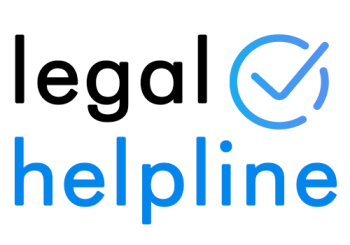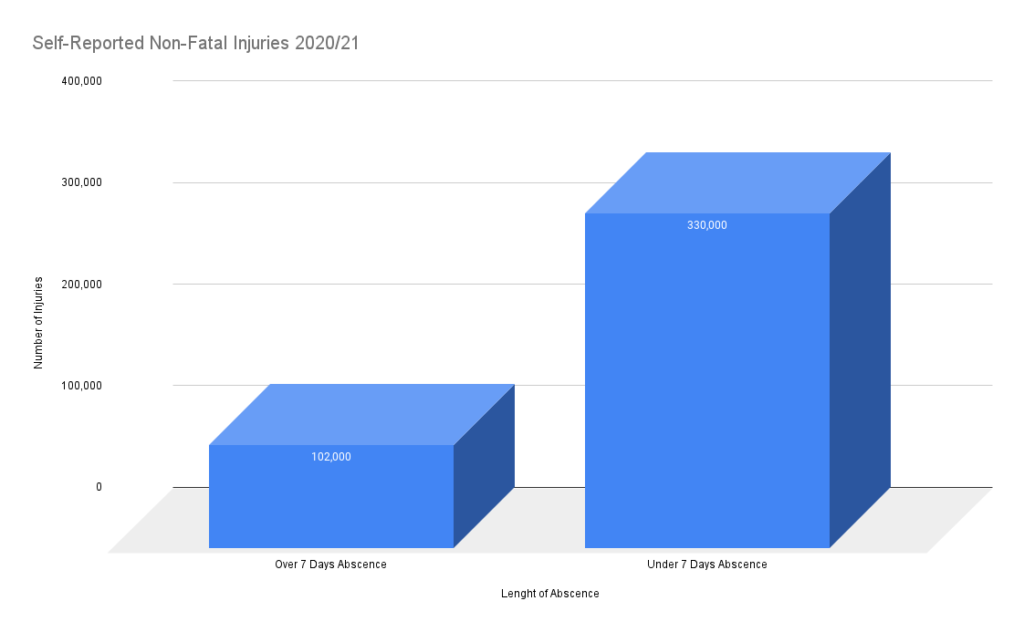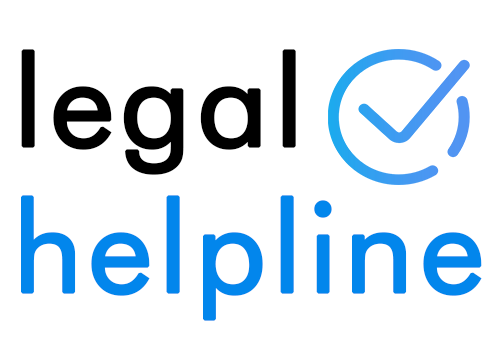In this guide, we will look at the role that the Management of Health and Safety at Work Regulations 1999 (MHSWR) plays in workplace health and safety. We look at how these regulations contribute towards keeping you safe while you are at work. This guide is also going to look at the claim process if you are injured due to non-compliance with these regulations.
When you’re at work, you’re owed a duty of care. This duty of care means that your employer needs to take all reasonably practicable steps to ensure that you’re safe. There are a number of pieces of legislation that are in place relating to this duty, including the MHSWR.

Because each claim is based on at least partially unique circumstances, we might not answer all of your questions on this page. If you do have more questions or need free legal advice, you can:
- Call and talk to an advisor on 0333 000 0729
- Write to us using our contact form
- Use the live chat feature on this page to speak with an advisor
Jump To A Section:
- Explaining Management Of Health And Safety At Work Regulations 1999
- What Does The MHSWR Do?
- Steps Employers Have To Take
- How Risk Assessments Work
- Implementing Risk Assessments
- Further Employers Duties In The Management Of Health And Safety At Work Regulations 1999
- Employees’ Duties In The Management Of Health And Safety At Work Regulations 1999
- How Do I Work Out What I Am Entitled To Claim?
- How Do Special Damages Work?
- What Can You Do If Injured At Work?
- No Win No Fee Agreements
- Contact Legal Helpline Today
- Read More
- Key Health And Safety Statistics
- FAQ On Workers’ Health And Safety
Explaining Management Of Health And Safety At Work Regulations 1999
The Management of Health and Safety at Work Regulations 1999 is one of the main pieces of legislation that enforce workplace safety. It sits alongside other regulations such as the Health and Safety at Work etc. Act 1974 (HASAWA). The Health and Safety Executive (HSE) is the national regulator in Britain for workplace health and safety.
The HASAWA outlines the general duty of care that employers owe those who work for them. It states that they need to take reasonably practicable steps to ensure the safety of their workers. This means that they don’t need to take steps that aren’t possible at the time, and they aren’t expected to take steps that are disproportionate to the risk presented.
Other pieces of legislation, such as the MHSWR, the Provision and Use of Work Equipment Regulations 1998 (PUWER) and the Personal Protective Equipment Regulations 2002 look more specifically at the things employers are expected to do in various areas of health and safety regulation.
For more information on the general duty of care that employers owe their employees, speak with an advisor today. If you have a valid case, you could be connected with a No Win No Fee solicitor from our panel.
What Does The MHSWR Do?
The Management of Health and Safety at Work Regulations 1999 forms part of an overall body of safety at work regulations. The aim of these pieces of legislation is to prevent injuries from occurring in the workplace.
The MHSWR outlines an employers requirements to:
- Carry out risk assessments
- Appoint someone competent to help implement arrangements that are identified by risk assessments
- Set up procedures for emergency situations
- Make sure that information is clearly communicated to employees
The HASAWA also empowers the HSE to take punitive action against any business that fails to comply with all health and safety laws. Compliance with the MHSWR is mandatory.
For more information on whether you could claim if a breach of your employer’s duty of care has led to injury, speak with an advisor today.
Steps Employers Have To Take
Under the Management of Health and Safety at Work Regulations 1999, employers need to make arrangements so that health and safety risks can be managed. The legal requirements of this piece of legislation include:
- Creating a health and safety policy that is in writing (for workplaces that employ five people or more)
- Carrying out “suitable and sufficient” risk assessments. As well as risks to employees, this should also cover customers, contractors, partners and anyone else who could be affected by your activities
- Arrange for the planning, organisation, control and monitoring of the measures that the risk assessment results in
- Providing access to competent advice on workplace health and safety
- Informing employees of risks in the workplace and steps that have been taken to mitigate these
- Providing training and instruction on handling risks
- Ensuring that appropriate supervision is in place
- Consultations with employees about workplace risks and the preventative and protective measures that are in place
Failure to do any of the above could cause accidents that result in injuries, such as a broken finger, a broken leg, and fractured vertebrae. In some cases, it might cause permanent effects such as a head injury or paralysis.
For more information on what steps you could take if any of the above have not been adhered to, and you were injured as a result, then get in touch with our team.
How Risk Assessments Work
One of the main aims of the Management of Health and Safety at Work Regulations 1999 is to ensure that employers undertake risk assessments. These assessments are intended to identify workplace hazards, with the goal of mitigating or avoiding them.
Below, we look at some of the steps that can be taken to carry out a risk assessment:
- Identify a hazard. Your employer should look around the workplace, and consider what elements of the working environment could cause harm- these are hazards. They can relate to the way people work, the presence of certain substances or chemicals and the condition of the workspace.
- Refer to accident at work and ill-health records; they might bring attention to a hazard that’s less obvious.
- Speak to employees. An employer should talk with their workers when risk assessing, as they may be more familiar with the risks of the role. Furthermore, some vulnerable groups of workers might have specific needs, such as workers with disabilities or new or expectant mothers.
- Assess the risk. Once you’ve spotted a hazard, think about how likely it is that someone could be harmed, and how serious the harm could be.
Read on for more information on how the results of a risk assessment could be actioned, or get in touch with our team today to see if you could claim for an injury caused by a breach of duty of care.
Implementing Risk Assessments
When a hazard has been identified and the risk has been assessed. the next step is to control it and prevent anyone from being hurt. Your employer should consider whether a hazard can be removed altogether. If it can’t, they should consider how they can manage the risk to make injury as unlikely as it can be.
They might be able to reduce the risk by:
- Changing the way the job is carried out
- Swapping the materials, machinery or process to one that is less likely to cause harm
- Changing the way that the work is done to prevent exposure to material, machinery or processes that are dangerous
- Implementing the required measures so that the job can be done safely
- Giving workers personal protective equipment (PPE) when they need it to do their job safely, and enforcing the wearing of it
Your employer should also record all significant findings, including hazards, those at risk and how these risks are controlled. The procedures that are put in place need to also be reviewed to make sure they’re effective.
Further Employers Duties In The Management Of Health And Safety At Work Regulations 1999
We have covered the main employer requirements under the Management of Health and Safety at Work Regulations 1999. However, there are some other requirements that they need to adhere to:
- If a new or expectant mother works at night, and they have a certificate from a medical practitioner saying that it’s necessary to suspend their work duties for a period, then this should be done.
- Young people shouldn’t be employed to do a job that’s outside their physical or psychological capabilities.
For more information on an employer’s duty of care, speak with an advisor today.
Employees’ Duties In The Management Of Health And Safety At Work Regulations 1999
As part of the Management of Health and Safety at Work Regulations 1999, employees are expected to:
- Carry out their duties in accordance with the training provided
- Raise awareness of any risk in the workplace or the course of their duties which represents a serious and immediate risk of danger
- Raise awareness of any risk that they don’t feel has been covered with the relevant health and safety training, where this has not already been raised to the employer
For more information on the steps you could take after an accident at work caused by negligence, speak with an advisor today.
How Do I Work Out What I Am Entitled To Claim?
If your employer does not comply fully with the Management of Health and Safety at Work Regulations 1999, you may be able to claim compensation if you were injured as a result. It’s difficult to give an average compensation settlement amount that you could receive.
The table below shows examples of compensation ranges for different types of injuries. The Judicial College produces guidelines that legal professionals can use to place a value on injuries. We have based this table on these guidelines.
| Health Problem | More Info | Possible Damages |
|---|---|---|
| Bowels | A condition that includes complete loss of natural bowel and urinary function, as well as other medical complications. | Up to £184,200 |
| Jaw fracture- Very serious | There may be permanent consequences including severe pain, food restrictions, paraesthesia and arthritis in joints due to several fractures that require prolonged treatment. | £28,610 to £42,730 |
| Jaw fracture- Simple | This is a simple fracture of the jaw that will heal completely. | £6,460 to £8,730 |
| Chest | An injury to the chest, lungs, and/or heart resulting in permanent damage, impaired function, and reduced life expectancy. | £65,740 to £100,670 |
| Facial scarring- Less Severe | Scarring on the face is less severe. A significant amount of disfigurement and psychological impact is still evident. | £17,960 to £48,420 |
| Toe- Moderate | The injury can cause relatively simple fractures or it can aggravate a degenerative condition or it can cause laceration injuries to the toes. In cases involving prolonged pain and/or permanent scarring, the upper end of this bracket may be justified. | Up to £9,600 |
| Pelvis and hips- Lesser | The absence of residual disability following a significant injury. An award may exceed the mid-point of this range in the event of a complete recovery within two years, but it is not likely. | £3,950 to £12,590 |
| Death- Full Awareness | Burns or other injuries cause damage to the lungs or heart. After a period of full awareness, the victim would drift in and out of consciousness for three to five weeks. In order to save their lives, they may be subjected to traumatic and invasive treatments, which may cause them further suffering. In three months, they will likely die. | £12,540 to £23,810 |
| Amputation- One foot | Amputations below the knee are also treated as ankle amputations because of the loss of ankle joints. Amputation would be done below the knee, above the ankle. | £201,490 to £270,100 |
| Eye- Minor | Injuries of this magnitude include being struck in the eye, inhaling fumes such as smoke, or being splashed by liquids, all of which result in temporary pain and loss of vision. | £3,950 to £8,730 |
The part of your potential settlement that you receive for the pain, discomfort and loss of amenity your injuries have caused you can be compensated through a head of claim called general damages. This is the part of your claim illustrated in the table above.
Another option for valuing your claim is to call our team. One of our advisors can assess your claim and, if it’s valid, provide you with a No Win No Fee solicitor from our panel.
How Do Special Damages Work?
Special damages relate to monetary losses. These might be future losses that are predicted or losses you have already faced. Please be aware, that you will need to prove these losses by providing documented evidence in order to claim for them. Below, are some examples of why you might wish to try claiming special damages.
- Lost earnings if you took time off work and were not paid in full. Also, you could be able to claim the value of any leave days you had to take.
- Lowered lifetime earnings if you won’t be able to work as effectively in the future. Or if you will not be able to work at all going forward.
- Medical fees if you had to pay for treatment.
- Care costs if you had to hire a care professional to help take care of you at home.
If you would like to learn what types of damages might be appropriate, based on your own situation, please get in touch with an advisor. An advisor can evaluate your claim and then help you further with this.
What Can You Do If Injured At Work?
If you are injured at work due to failure to comply with the Management of Health and Safety at Work Regulations 1999, there are steps you can take. These steps will help you to prepare for making a compensation claim:
- Ensure that you seek proper medical care for your injuries. This will ensure an official record is made.
- Follow the correct accident at work reporting procedure that your employer has in place. Also, make sure the incident has been recorded in the company accident book.
- Take photographs of the cause of your accident, and also your injuries so you can show how bad they were.
- If anyone saw that accident take place, you can ask them for their contact details. They could act as witnesses at a later stage in the claims process.
- Begin to keep documented proof of any financial losses you faced because of the accident, your injuries, or due to the claims process. Also, keep invoices, travel tickets, bills, receipts, etc.
Contact our team of claim advisors, to have your claim evaluated and learn what the next steps should be. If your claim is valid, you could be connected with a lawyer from our panel.
No Win No Fee Agreements
You may be able to fund the work of a lawyer in a claim for a breach of the Management of Health and Safety at Work Regulations 1999 under a No Win No Fee agreement.
This means that you don’t have to pay them an upfront fee in order for them to start working on your case. There’s also nothing for you to pay them as the case progresses.
However, if you do win your claim, you will need to pay your lawyer a legal limited success fee. You will have agreed on this fee with your lawyer before they started processing your claim. This fee won’t be due if your claim isn’t a success.
If you want more information about how No Win No Fee lawyers can assist you, please call and speak to a claims advisor today.
Contact Legal Helpline Today
Have you been harmed due to your employer failing to comply with the Management of Health and Safety at Work Regulations 1999? Has this caused you to sustain an injury? If so, you may use the information below to get some help with starting a claim:
- Telephone 0333 000 0729
- Request a callback using our online form
Read More
Here are some links to useful web pages.
Am I eligible for Statutory Sick Pay (SSP)?
The Reporting of Injuries, Diseases and Dangerous Occurrences Regulations 2013
And here are some links to related claim guides.
- Claiming compensation for an accident at work
- Accidents at work caused by tiredness and fatigue
- Claim compensation for slipping at work and hurting your back
- How to make an NHS accident at work claim
- How to claim compensation for an accident at work during your probationary period
- Why is it important to report accidents in the workplace?
- I was injured due to no workplace training, can I claim?
- How to claim for a back injury suffered while working for the NHS
- Office-based accident at work claims
- How to make a workplace back injury claim
- Employee rights after an accident at work
- Assault at work compensation claims
- Agency worker accident at work claims
- Tendon injury at work claims
- How to make a claim for an injury caused by defective work equipment
- How to claim for a back injury at work caused by lifting?
- Inadequate protective equipment compensation claims
- Ladder accident at work compensation claims
- Stuck in a lift at work? See if you can claim compensation
- Fatal accident at work claims
- Claiming when injured due to lack of work safety boots
- Manual handling claims
- Slip, trip, fall at workplace compensation claims
- Forklift accident compensation claims
- Warehouse accident claims
- Accident working abroad compensation claims
- Construction accident claims
- Self-employed accident at work claims
- Scaffolding accident compensation claims
- Could I be sacked for an accident at work claim?
- Firefighter injured at work claims
- Employers’ responsibilities after a work accident
- Claim for carbon monoxide poisoning at work
- I did not take time off work after an accident, could I claim?
- Chemical burn at work – can I claim compensation?
- Claiming for a work accident after leaving the company
- Do employers pay for work-related injury claims?
- Do you have to be an employee to make a work accident claim?
- Time limits for work injury claims
- Part-time employee injury claims
- I got hurt at work, do I need a lawyer?
- The personal injury claims process explained
- The Management Of Health And Safety At Work Regulations 1999
- Who to notify if a fatal accident occurs at work?
- How to use an accident at work claim calculator
- Fatal accident at work claims guide
- Contractor injured at work – can you claim?
- How many lone workers are attacked every day?
- Bulging disc workers’ compensation claims
Key Health And Safety Statistics
Using statistics that were provided by the HSE, we have made the graph below. It shows the split between less than and more than 7 days of absence due to self-reported, non-fatal injuries for 2020/21. As you can see, the majority of self-reported injuries resulted in an absence of fewer than 7 days in this time period.
FAQ On Workers’ Health And Safety
Here are some answers to common work accident questions.
What workplace injuries can you claim for?
In theory, you can claim for any workplace injury or illness, as long as you can prove that your employer is liable and that it has impacted your quality of life.
How could you be injured in the workplace?
You could be injured due to your employer not complying with all relevant and applicable health and safety laws and guidelines. For example, they may not maintain good housekeeping, resulting in a slip, trip or fall.
How long do you have to claim?
In general, you have up to three years to start a claim. But some factors may impact this timeframe. You can call and speak to one of our advisors, to find out which deadline will apply.
For more information on how the Management of Health and Safety at Work Regulations 1999 can safeguard you in the workplace, speak with an advisor today.
Written by MW
Edited by FS






